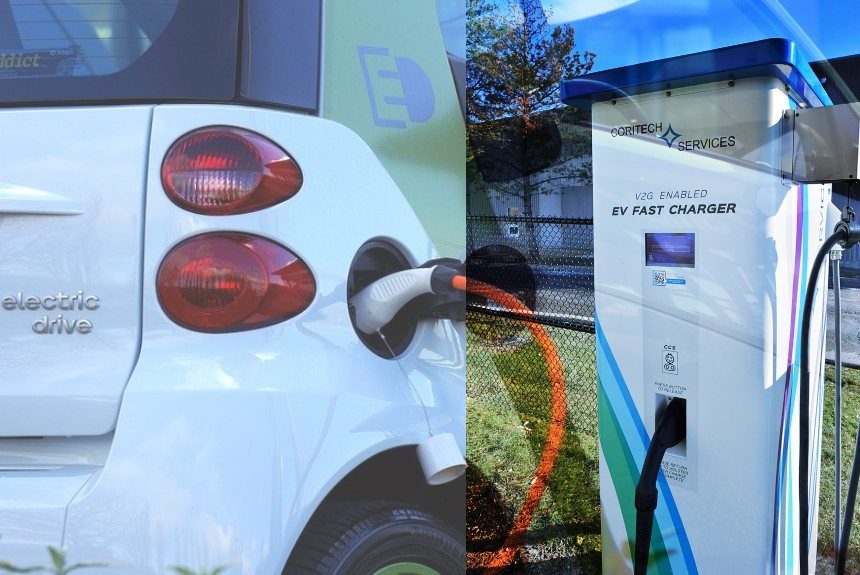By 2030, Electric Vehicles sold will reach over 20 million; this means a potential energy storage capacity of around 5TWh on wheels, according to this article (Vehicle-to-grid, 2020). Energy capacity and storage in EV’s have significant potential to influence the energy supply system and support renewable energy production.
The article says that smart charging applications can control the loading of electric cars in a way that allows the charging power to be increased or decreased when needed. The V2G technology takes it a step further by allowing the charged power to be pushed back to the grid from car batteries to balance variations in energy production and consumption (Vehicle-to-grid, 2020).
Vehicle to Grid (V2G) technology is gaining popularity with the coming of large quantities of electric cars in the market. This technology is initially developed in Japan to improve the stability of electricity supply after the wake of the Fukushima disasters (First electric vehicle, 2016).
By tapping on available energy in all existing electric cars, the use of V2G can offer grid balance services when there are high demands for energy. This function improves the sustainability and resilience of the energy systems, can reduce dependence from fossil fuels and emissions, primarily if electricity come from renewable sources.
There are many emerging studies on the V2G, particularly on its technical aspects relating to its battery degradation, storage capacity, smart charging and how to optimise these functions to supplement power on the grid especially during peak hours and providing economic benefits to EV owners.
A study on EV2 looks at the storage capacity of plug-in hybrid electric vehicles and their potential to distribute or ‘sell’ this stored energy peak demands. Result of their study shows that V2G presents a promising solution for future energy problems. Many automotive and governments around the world have seen this possibility and are taking steps to make V2G viable for future use (Zhou & Li, 2015).
Another study presented a review of the V2G technology, its energy management when loading power into the grid, and as mobile energy storage.
Pani et al. (2015) say, “The management strategies for V2G and the involved key issues are analysed in detail, such as battery weary, bidirectional charger and charging stations via the centralized control, autonomous control and battery management strategies. Besides, the economic benefits from both the power grid & EV owners and research development directions are discussed in the paper.”
The significance of vehicle-to-grid technology to climate change is that it can enhance the decarbonisation of transportation and optimising renewable energy to power the grid and EVs.
Like most emerging technologies, there are still gaps and challenges that need to be addressed before this technology can be widely implemented— for instance, the need for institutional capacity and policy coordination which creates for further opportunities for research.
Click the links below to read the studies mentioned in this post:
Source Citations:
Vehicle-to-Grid: Everything you need to know (2020). Virta. Retrieved from https://www.virta.global/vehicle-to-grid-v2g
First electric vehicle to grid charging system at Aston. (2016, February). Aston University. Retrieved from https://www2.aston.ac.uk/news/releases/2016/february/aston-commissions-uks-first-electric-vehicle-to-grid-charging-system
Zhou, Yimin. (2015). Vehicle to grid technology: A review. 10.1109/ChiCC.2015.7261068.
Pani, Pritish & Athreya, Abhishek & Panday, Aishwarya & Bansal, Hari & Agrawal, Hanuman. (2015). Integration of the Vehicle-to-Grid Technology. 10.1109/EnergyEconomics.2015.7235108.



Leave a Reply